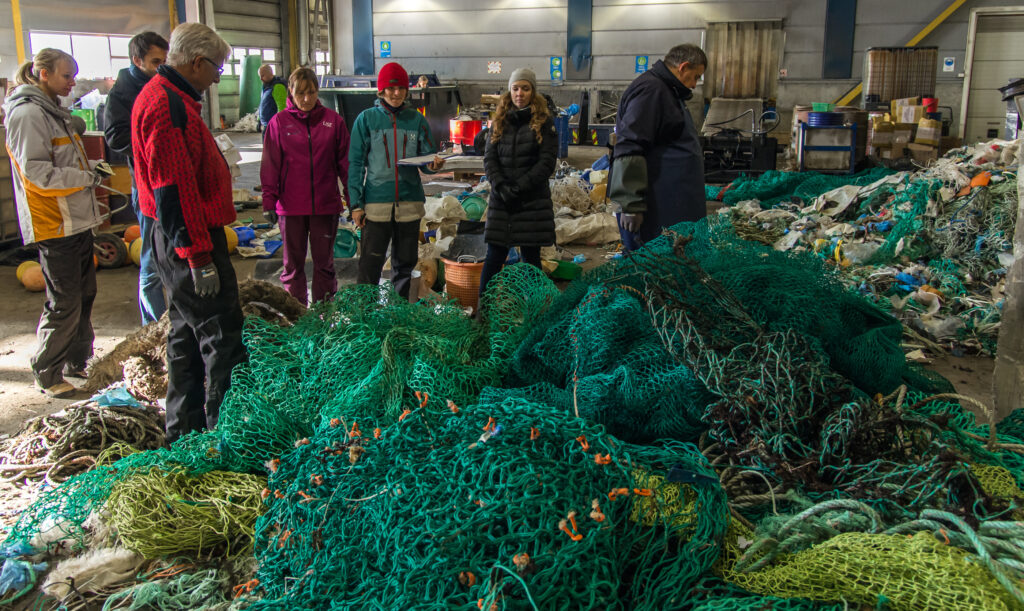Beach Litter Deep Dives: how to ensure the relevance of marine litter data to decision-making processes in the Arctic and beyond
I have worked on numerous projects on marine litter together with other researchers, managers and stakeholders with the aim of identifying preventive measures. When working with fisheries actors in the Barents Sea in the Arctic, who are considered important contributors of marine litter in the region, we realized that neither our marine litter data nor the monitoring protocols applied in the region were sufficient to tell us exactly which stakeholder groups are responsible for the litter that washes ashore.
Beach cleaners, on the other hand, had a clear idea of who might be responsible for marine litter, and were frustrated that polluters were not being held accountable. Thus, we saw the need to formalize the beach cleaners’ knowledge into scientifically sound data that could inform decision makers.
By working together with fishermen and fisheries experts, we were not only able to identify information that could tell us who the potential polluters are, but we were also able to gather important information about the reasons behind littering. By including these actors, we saw them take ownership of the problem and take steps to implement preventive measures in their sector.
We named the methodology “beach litter deep dives” and published our insights in Marine Pollution Bulletin. While our publication focuses on the Arctic region, we believe our main question – “how can we collect data that provide decision-makers with information that can be used to reduce the input of litter into the environment?” – and our findings are relevant to other parts of the world, and that our research could be replicated elsewhere.
While recognizing the importance of standardized methods, tools, and protocols for assessing the sources, pathways, and mass of poorly managed plastics, we argue that it is also necessary to apply an adaptive approach in which data collection is tailored to the specific socioeconomic, cultural, and environmental context(s), as well as to the actors involved.
Before approaching fisheries actors, key questions left unanswered based on existing data were the following: 1) What is the age of the litter? 2) What is the geographical origin of the litter? and 3) Is it the result of accidents or discards? Packaging often holds information for the first two questions. Analysis of date stamps, logo/brand, design, and text can tell us whether the litter is the result of “old sins” or on-going activities, and can tell us something about the possible geographical origin.
For example: a recently dated bottle of dishwashing liquid from the same geographical origin as vessels operating in the area is likely to have been discarded during on-going maritime activities – how to secure the quality of such data and its potential use are being discussed in a recent paper.
Information provided by fishers and other knowledge holders also identified items discarded at sea. These include parts of conveyor belts, rolls of packing tubes, bundles of strapping bands and sheets of blue industrial plastic, all of which originate from below-deck operations aboard freezer trawlers. Analysis of the ropes, which are among the ten most common wastes on the region’s beaches, showed that many of them are scraps from trawl repairs. Cut ropes from aquaculture operations were also identified.
In addition, it was documented, with the help of experts, that most of the fishing nets washed up in the area were cuts after repairing trawls, which had been discarded. Some of these nets were also of more recent origin and all the nets were of the type used by the fishing vessels operating in the area.

- Deep dive workshop with fisheries representatives, NGOs and researchers on beach litter found at Svalbard, Arctic.
Most importantly, the involvement of stakeholders in physical workshops fostered dialogue and provided new insights on specific issues that could be targeted to prevent plastic debris from entering the environment. “Seeing is believing,” and walking through piles of trash was certainly an eye-opener for the fisheries representatives involved.
The workshops held resulted in the arrangement of seminars to discuss littering in fishing operations and the aquaculture industry in the region. These workshops also provided an opportunity for stakeholders to seek advice on how to reduce litter in their operations. The Deep Dive process identified specific actions for immediate implementation in both the capture fisheries and aquaculture sectors.
We believe the Deep Dive method can be applied in different contexts to ensure the relevance of data collected with the aim to identify important sources of, and behaviours behind littering. However, the data to be collected and the actors to be involved, as well as the possible solutions suggested by the Deep Dive process, will vary according to the context.
Hopefully our study will encourage researchers, industry sectors, and citizens to look at litter with new eyes, and help broadening the range of actors invited to share their insights to help decision-makers identifying the adequate measures for reducing littering.
By Jannike Falk-Andersson, Norwegian Institute for Water Research (NIVA)